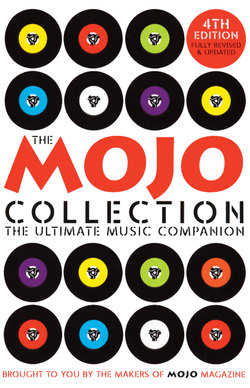Читать книгу The Mojo Collection - Various Mojo Magazine - Страница 95
На сайте Литреса книга снята с продажи.
Jefferson Airplane Surrealistic Pillow San Francisco’s psychedelic secrets get their first airing.
ОглавлениеRecord label: RCA Victor
Produced: Rick Jarrard
Recorded: RCA Studios, Hollywood; October 31–November 22, 1966
Released: September 1967 (UK) February 1967 (US)
Chart peaks: None (UK) 3 (US)
Personnel: Grace Slick (v, p, k, recorder); Paul Kantner (g, v); Jorma Kaukonen (g, v); Jack Casady (b, g); Spencer Dryden (d); Marty Balin (v, g); Jerry Garcia (g, musical and spiritual adviser); Dave Hassinger (e)
Track listing: She Has Funny Cars; Somebody To Love (S); My Best Friend; Today; Comin’ Back To Me; 3/5 Of A Mile In 10 Seconds; D.C.B.A.-25; How Do You Feel; Embryonic Journey; White Rabbit (S); Plastic Fantastic Lover
Running time: 34.26
Current CD: Heritage 82876503512 adds: In The Morning; J.P.P. Mestep B. Blues; Go To Her; Come Back Baby; Somebody To Love (Mono Single Version); White Rabbit (Mono Single Version); D.C.B.A.-25 (Instrumental)
Further listening: After Bathing At Baxter’s (1967)
Further reading: Jefferson Airplane And The San Francisco Sound (Ralph J Gleason, 1969); Got A Revolution: The Turbulent Flight of Jefferson Airplane (Paul Kantner, 2003); www.jeffersonairplane.com
Download: HMV Digital; iTunes
Coffee-bar folkies energised by the British Invasion and The Byrds, Bob Dylan and Beat texts, free love and LSD, Jefferson Airplane were the mid-’60s San Francisco scene’s first fledglings. After headlining a series of druggy dances in autumn 1965, they secured a major deal with RCA and released a mild-mannered folk-rock album (Takes Off) in August 1966.
‘We were unhappy with the results,’ remembered Paul Kantner, so he invited The Grateful Dead’s Jerry Garcia along to the sessions for the follow-up, as a peacemaker between the production team and the band, whose working methods were increasingly rooted in improvisation. More crucial still was the arrival of singer Grace Slick, an ex-model who’d cut her teeth with Bay Area combo The Great Society. Slick brought a steely beauty, a scat singing style and, said Kantner, ‘an early punk attitude’; not to mention two breathtaking songs, Somebody To Love and White Rabbit, on which the album’s reputation is largely based. Also in tow was new drummer Spencer Dryden (replacing the errant Skip Spence), whose free-flowing style liberated the rhythm section. Remarkably, sessions for Pillow began just two weeks after Slick’s stage debut, yet her contribution was instantly felt. ‘A quantum leap’ is how Jorma Kaukonen describes the record, though a surfeit of love songs, vogueish reverb and acoustic instruments tends to belie the album’s acid reputation.
Writing in Esquire, Robert Christgau described it as ‘amplified Peter, Paul & Mary’, and ‘competent, original folk-rock’ at best; but to Garcia’s ears it sounded ‘as surrealistic as a pillow’. White Rabbit, with its ‘feed your head’ pay-off, may have been an obvious paean to acid, inspired by Ravel’s Bolero and Alice In Wonderland, but much of the album’s countercultural clout was understated. A wistful ‘Too many days are left unstoned’ (D.C.B.A.-25), sung in harmony over a gentle folk-rock backing, was more typical. White Rabbit aside, the moments of amplified abandon were reserved for each side’s opening cuts, the Diddleyesque She Has Funny Cars and 3/5 Of A Mile In 10 Seconds, with its memorable Balin rage, ‘Do away with people laughing at my hair’. The singer’s tear-stained vocals on Today and Comin’ Back To Me sat uneasily beside the group’s wayward image, but Surrealistic Pillow would have been far less enigmatic without him.
